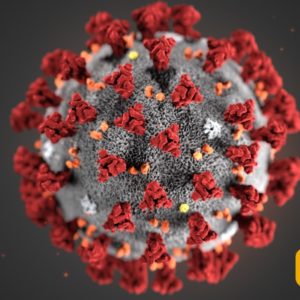How and where did the COVID coronavirus originate? Not even Alfred Hitchcock could devise such an international medical mystery, replete with political implications, foreign intrigue, and diplomatic wrangling. But this is real life, not a whodunnit. Today, a year and a half since the pandemic began, nothing is certain and we don’t know who to trust.
The story begins in December 2019 in Wuhan, China, a city of 11 million people. The Communist Chinese Party (CCP) reported to the world the appearance in Wuhan of the first cases of what turned out to be COVID. Since then, the CCP has engaged in misdirection, obfuscation, outright lying, and evidence destruction (early virus samples were destroyed for “biosafety reasons”). Even the original timeline is in doubt after The Wall Street Journal reported the hospitalization, prior to December, of three staff members of the Wuhan Institute of Virology (WIV), the laboratory where Chinese scientists were studying the virus.
By mid-January 2020, COVID had spread internationally, although few outside of China appreciated the enormity of the situation. (The CCP locked down Wuhan in late January. Whether they allowed travelers to leave the city and disseminate the virus remains uncertain).
Questions of the virus’s origin began circulating. While some in the U.S., including polarizing figures Sen. Tom Cotton and President Donald Trump, asserted the virus leaked from the WIV laboratory, most scientists and the international press were adamant it did not come from the laboratory but evolved naturally from bats to man through an intermediate animal host. The CCP insisted that the virus first appeared at a Wuhan open wet market. Until recently, this was the conventional wisdom in the lay press and medical literature. To assert otherwise was to engage in conspiracy theory, xenophobia, and perhaps worst of all, validation of Trump.
But science demands an open mind; theories must be fit to the facts, not facts retrofitted to theories. And as John Adams said, “facts are stubborn things.” The virus was never isolated at a wet market; that was a lie. An animal intermediate vector, which would basically put to rest the lab leak theory, has never been identified. Without proof of an animal vector, the lab theory remains viable. Moreover, to believe that the virus originated several miles from one of the world’s most sophisticated virus labs, with the lab having no role, strains credulity. It would be like discovering a source of radioactivity and denying any connection to a nearby nuclear power plant. That remarkable coincidence will not disappear easily.
In the Bulletin of Atomic Scientists last week, former New York Times science editor Nicholas Wade laid out the case for the lab leak theory. It was quickly supported by prominent scientists including Nobel Laureate virologist David Baltimore.
The script is flipping. Viable hypotheses include natural evolution from an animal vector, an accidental lab leak of a natural virus or an engineered virus; and a deliberate leak of an engineered virus (while less likely, this would amount to biowarfare). Any of these is possible. We still have no conclusive answers.
A good whodunnit requires a cast of characters. We obviously cannot trust the CCP. How about Glenn Kessler, chief writer for the Fact Checker column of the Washington Post? In May 2020 he tweeted, “(it is) virtually impossible for the virus to jump from the lab. (With) many interviews with actual scientists… we deal in facts.” Now, one year later, he wrote a story headlined, “How the Wuhan Lab-leak Suddenly Became Credible.” But it wasn’t suddenly; it was always credible.
The World Health Organization? Their ties with China are incestuous. In a joint report in February they declared, “The findings suggest the laboratory incident hypothesis is extremely unlikely to explain introduction of the virus into the human population.” Two days later the WHO Secretary-General backtracked, “Some questions have been raised as to whether some hypotheses have been discarded … I want to clarify that all hypotheses remain open and require further study.”
Dr. Anthony Fauci has vacillated on the source of the virus from animal origin to lab leak. He owes the world a frank explanation of all he knows about virus research at the WIV.
It is not a crime to be wrong about a hypothesis. The scientific process involves correcting errors and revising hypotheses. But “following the science” means not trying to fool people. One of the greatest scientific minds of our era, Nobel Laureate Richard Feynman, once said, “You must not fool yourself, and you are the easiest person to fool.”

